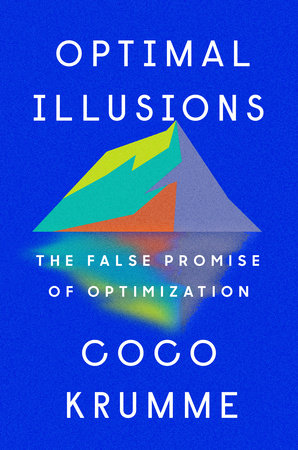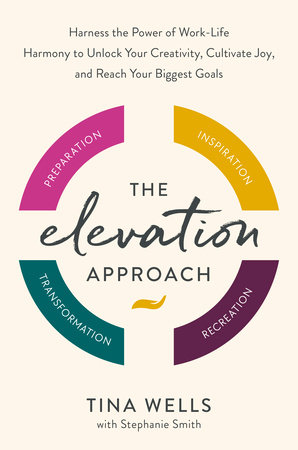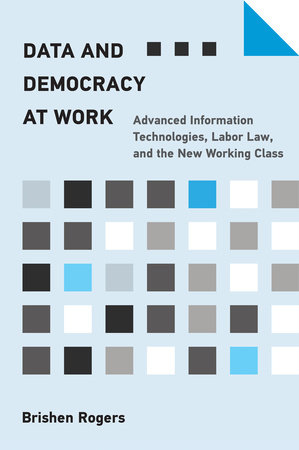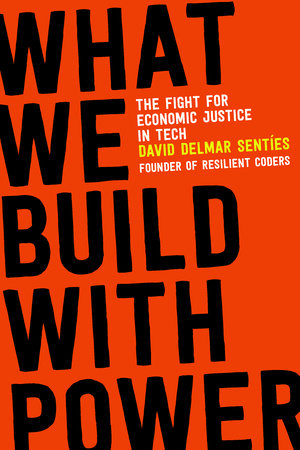Quick Summary
One Sentence Summary
“What Should I Do with My Life?” by Po Bronson is an inspiring exploration of how various individuals discover their true calling and purpose in life.
Big Idea
The central theme revolves around the universal quest for meaning and fulfillment, highlighting that the journey to find one’s life purpose is both challenging and deeply personal.
Five Key Ideas
- Diverse Stories: Bronson shares over 50 real-life stories, illustrating the myriad paths people take to find their life’s work.
- Common Struggles: Common themes of fear, uncertainty, and risk emerge, showcasing the shared human experience in searching for purpose.
- Personal Reflection: The book encourages introspection, urging readers to examine their own values, desires, and fears.
- Overcoming Obstacles: It highlights the importance of overcoming societal pressures, financial concerns, and self-doubt on the path to fulfillment.
- Continuous Journey: The book emphasizes that finding one’s calling is an ongoing process, not a one-time discovery.
Actionable Advice
Reflect on your own life story, values, and passions, and be willing to take calculated risks to pursue what truly fulfills you.
About the Author
Po Bronson is a journalist and author known for his insightful exploration of personal and societal issues, with a unique ability to weave compelling narratives.
Read Next
For further exploration of finding purpose and happiness, consider “The Element” by Ken Robinson, “Drive” by Daniel H. Pink, and “Man’s Search for Meaning” by Viktor E. Frankl.
In Depth
Diverse Stories
A Mosaic of Life Paths
In “What Should I Do with My Life?” Po Bronson doesn’t just tell one story. He tells many. Each chapter is a window into someone’s life, showing how they wrestled with the big question: what should I do with my life?
One powerful story is about John, a successful but unfulfilled lawyer. He always dreamt of being a marine biologist. After a heart-to-heart with his daughter, he realized he wasn’t living the life he truly wanted. So, he took the leap. He quit law and pursued marine biology. It was hard. But he found joy in following his passion. His story isn’t just about career change; it’s about courage, about listening to that inner voice.
Bronson writes, “It’s incredibly hard to know oneself.” This line struck me. I remember my own journey. Fresh out of college, armed with a degree I wasn’t passionate about. I followed the expected path, not my path. Like John, I reached a point where I had to listen to my inner voice. It was scary. But it led me to a career I love.
Each story in Bronson’s book is unique. But they all share this common thread: the journey to self-discovery. They remind us that it’s okay not to have all the answers. It’s okay to change paths, to start over. It’s a process.
In these stories, we see reflections of our own struggles. The fears, the doubts, the societal pressures. They’re universal. But so is the potential for change, for finding what really matters to us.
The diversity of these stories is their strength. They don’t prescribe a one-size-fits-all solution. They show the messy, beautiful reality of finding one’s path. It’s not a straight line. It’s a winding road, with ups and downs. But it’s worth traveling.
Bronson’s collection of stories is like a mosaic. Each piece, each story, adds color and depth. Together, they create a bigger picture of what it means to seek and find purpose in life. They inspire, challenge, and comfort. They remind us that we’re not alone in this quest.
The stories in “What Should I Do with My Life?” aren’t just narratives. They’re mirrors. They prompt us to reflect, to ask ourselves the same question. They encourage us to embark on our own journey of self-discovery. And that’s a journey worth taking.
Common Struggles
Shared Human Experience
Everyone faces struggles when searching for life’s purpose. In “What Should I Do with My Life?” Po Bronson doesn’t shy away from these challenges. He lays them bare, showing they are universal.
Take the story of Carol, a high-flying executive. She had success, money, everything society values. But she felt empty. She struggled with what others expected of her versus what she wanted. It was a tug-of-war between her inner desires and societal norms.
Bronson writes, “The hardest part of finding our path is accepting that we want to walk a different way than most.” Carol’s tale echoes this. She eventually stepped away from her lucrative career. She chose a path aligned with her values, not the world’s expectations. It was tough. People didn’t understand. But she found fulfillment.
I remember my own struggle. Friends climbed the corporate ladder. I felt pressure to do the same. But my heart wasn’t in it. Like Carol, I had to choose my own path. It was daunting. But it was necessary for my happiness.
The stories in Bronson’s book are filled with such struggles. Fear of failure. Worry about financial security. Doubt about making the right choice. These are emotions we all face. They are part of the human condition.
But these struggles are not just obstacles. They are catalysts for growth. They push us to really examine what we want, what makes us tick. It’s through wrestling with these fears and doubts that we often find clarity.
Bronson shows us that it’s normal to have these struggles. It’s part of the journey. The key is not to let them stop us. We must face them, work through them, and emerge stronger.
The common struggles we all face in finding our purpose serve as a reminder. We are not alone. Others have walked this path. They’ve faced the same fears, the same doubts. And many have come through on the other side, with a clearer sense of who they are and what they want from life.
In sharing these stories of struggle, Bronson offers both solace and inspiration. Yes, the journey is hard. But it’s also worth it. It leads us to a deeper understanding of ourselves. And ultimately, to a life that feels authentic and fulfilling.
The struggles are real. But so are the rewards of overcoming them. Bronson’s book encourages us to embrace the journey, struggles and all. For it is through these common human experiences that we often find our truest selves.
Personal Reflection
The Journey Inward
Po Bronson’s book compels us to look inward. It’s about understanding our own desires, fears, and values. This process of self-reflection is a core theme throughout.
Consider Ashley’s story. She was a banker, yet she felt unfulfilled. She had to dig deep. Why did she choose banking? What did she truly want? Her journey was not just about a career shift. It was about self-discovery.
Bronson writes, “Finding what we believe in and what we can do about it is one of life’s great dramas.” Ashley’s narrative embodies this. She realized her passion lay in education. She wanted to make a difference. The transition was scary, full of uncertainties. But it was her true calling. It took honest reflection to see that.
I’ve been there too. Stuck in a job I didn’t like. I had to ask myself tough questions. Why am I here? What do I really want? It’s uncomfortable. But it’s also enlightening.
Bronson encourages us to embark on this journey of self-reflection. It’s not easy. It requires honesty. Sometimes, it means facing uncomfortable truths about ourselves and our choices. But it’s necessary.
The power of personal reflection lies in its ability to give us clarity. It helps us understand our motivations, our fears, and our dreams. It can be the key to unlocking our true potential and finding a path that resonates with who we are.
In the book, story after story, we see individuals facing this moment of introspection. Some are forced into it by circumstances, others choose it. But all come to a point where they must look inward and ask themselves the hard questions about what they really want from life.
Through these stories, Bronson shows us that this inner journey is a crucial step in finding our life’s purpose. It’s not just about changing jobs or careers. It’s about aligning our external life with our internal values and desires.
Personal reflection can be daunting. It can challenge our current life choices and push us out of our comfort zones. But it can also lead to profound personal growth and a life that is more fulfilling and authentic.
Bronson’s message is clear: take the time to understand yourself. Reflect on your values, your passions, and your fears. It’s through this process of self-discovery that we can find a path that truly fulfills us. It’s not a one-time exercise, but a continuous process of growth and understanding.
In a world that often emphasizes external success and societal expectations, “What Should I Do with My Life?” reminds us of the importance of looking inward. It shows us that the journey to finding our life’s work begins within ourselves.
Overcoming Obstacles
Breaking Barriers
In “What Should I Do with My Life?”, Po Bronson doesn’t just present the journey; he highlights the barriers and how people overcome them. Obstacles like societal pressure, financial worries, and self-doubt are common themes.
Take Terry’s story. He was a talented musician, but he pursued a corporate career, bowing to societal expectations and financial security. Yet, he was unhappy. The real obstacle wasn’t his job. It was his fear of judgment and failure.
Bronson aptly notes, “We are all writing the story of our life. We want to know what it’s ‘about’, what the ‘themes’ are.” Terry’s story resonates with this. He had to redefine his life’s theme. It wasn’t easy. He faced skepticism from peers. Financial stability was at risk. But his passion for music was undeniable. He took the leap, overcoming the mental barriers that held him back.
I remember my own hurdles. Family expectations. Secure job versus risky passion. The fear of failing in what I truly loved. These are not just my struggles; they’re universal.
Each story in Bronson’s book brings its own set of obstacles. But they also bring solutions. Courage to face societal norms. Perseverance to overcome financial fears. Strength to battle self-doubt.
The book shows that these barriers, while real and often daunting, are not insurmountable. They require introspection, courage, and sometimes, a leap of faith. But the reward lies in aligning our lives with our true passions and values.
Bronson’s narratives are not just stories; they’re roadmaps. They show us that while the journey to find what we should do with our lives is fraught with challenges, it’s possible to navigate these waters and come out on the other side.
Overcoming obstacles is a crucial part of finding one’s path. It’s about confronting the things that hold us back, whether they’re internal fears or external pressures. It’s about making tough choices, sometimes sacrificing short-term comfort for long-term fulfillment.
The stories in the book offer hope and inspiration. They remind us that while the journey may be tough, it’s not impossible. They encourage us to face our fears, challenge societal expectations, and take risks for the sake of what truly matters to us.
Bronson doesn’t romanticize the journey. He acknowledges the hardships. But he also celebrates the triumphs, the moments when individuals break through their barriers and find a path that resonates with their true selves.
In essence, “What Should I Do with My Life?” is a testament to human resilience and the power of determination. It shows that while the road to finding our life’s work can be rocky, with obstacles at every turn, it’s a road worth traveling. For in overcoming these obstacles, we often find our true purpose and, ultimately, our happiness.
Embracing Change
The Power of Adaptation
“Embracing Change” is a pivotal theme in Po Bronson’s “What Should I Do with My Life?” It’s about adapting to life’s shifts and transforming them into opportunities.
Consider the story of Lydia. She was a successful lawyer. Then, a personal tragedy struck. She reevaluated everything. Her career no longer felt meaningful. She embraced this change, shifting her focus to community work. It was a total 180-degree turn, but it brought her fulfillment.
Bronson poignantly states, “When you have the courage to change, you realize you could always have done it.” Lydia’s journey illustrates this. Change was thrust upon her. But instead of resisting, she embraced it. It led to a profound transformation in her life.
I’ve seen change’s power in my own life. Career shifts. Unexpected moves. Each change was daunting. But each brought growth and new perspectives.
Change is often viewed as something to fear. But Bronson turns this notion on its head. Through his narratives, he shows that change can be an ally, a catalyst for discovering what we truly want from life.
In the book, each story of embracing change is unique. Some face career changes, others personal upheavals. But all share a common thread – the willingness to adapt and the courage to embrace new possibilities.
Embracing change isn’t just about making a big leap. It’s about being open to new experiences, to learning, and to growing. It’s about understanding that life is fluid, and sometimes, the most unexpected changes lead to the most rewarding paths.
These stories also highlight the importance of resilience. Change can be scary. It can upend our lives. But it’s those who are able to adapt, to find new paths amidst the chaos, who often find deeper meaning and satisfaction.
Bronson’s message is clear: don’t fear change, embrace it. Use it as an opportunity to reassess your life, your goals, and your passions. Sometimes, it’s the unexpected twists and turns of life that lead us to where we’re truly meant to be.
“Embracing Change” in Bronson’s book is not just a theme; it’s a call to action. It encourages us to view change not as an obstacle but as an opening, a chance to grow and evolve. It reminds us that life is dynamic and that our paths are not set in stone.
In a world that often values stability and predictability, “What Should I Do with My Life?” challenges us to see the beauty and potential in change. It shows us that when we embrace change, when we’re willing to adapt and evolve, we open ourselves up to a world of possibilities and to finding a path that truly resonates with who we are.
More
Actionable Advice
-
Reflect Deeply: Ask yourself hard questions. What truly makes you happy? What are your values and passions?
-
Face Fears: Acknowledge your fears, whether it’s fear of failure, judgment, or change. Confronting them is the first step to overcoming them.
-
Break from Expectations: Don’t let societal or family expectations dictate your path. Choose what aligns with your true self.
-
Embrace Change: View change as an opportunity, not a threat. It can lead to growth and unexpected opportunities.
-
Seek Stories: Read about others’ journeys. They can offer inspiration and insights into your own path.
-
Experiment: Try new things. Volunteer, take a class, or start a side project. Exploration can lead to discovery.
-
Be Patient: Finding your life’s purpose isn’t a race. Give yourself time and space to figure it out.
-
Trust Your Instincts: Sometimes, the best guide is your own intuition. If something feels right, it might be worth pursuing.
-
Build Resilience: Prepare for setbacks. They are part of the journey. Resilience will help you keep moving forward.
-
Seek Support: Don’t go it alone. Friends, mentors, or coaches can provide valuable guidance and encouragement.
About the Author
Po Bronson is a celebrated American author and journalist. Born in Seattle, he pursued Economics at Stanford University, later acquiring an MBA from San Francisco State University. Bronson’s diverse career spans Silicon Valley, where he witnessed the tech boom, to writing thought-provoking books. His works, including the notable “What Should I Do with My Life?” and “The Nudist on the Late Shift”, explore life’s existential questions and the Silicon Valley culture. Bronson believes in the power of storytelling to unveil truths about human motivations and societal trends. He co-founded the San Francisco Writers’ Grotto, fostering a community for writers. Bronson’s writing is known for its deep human connection, often focusing on real-life struggles and the pursuit of purpose. He has been featured in prestigious publications like The New York Times and Wired. His belief in the transformative power of self-discovery and courage is evident in his writings, where he encourages readers to embrace change and pursue authentic lives. Po Bronson’s work not only entertains but also inspires introspection and courage in facing life’s choices.
Read These Next
You might like these similar books
- “The Art of Possibility” by Rosamund Stone Zander and Benjamin Zander
- “Drive: The Surprising Truth About What Motivates Us” by Daniel H. Pink
- “Man’s Search for Meaning” by Viktor E. Frankl
- “The Alchemist” by Paulo Coelho
- “The Road Less Traveled” by M. Scott Peck
FAQ
Q: What is the main theme of “What Should I Do with My Life?” by Po Bronson?
A: The main theme is discovering one’s true purpose and passion in life.
Q: Does the book provide practical advice?
A: Yes, it offers actionable insights through real-life stories.
Q: Is the book based on real stories?
A: Absolutely. It’s filled with true stories of people finding their path.
Q: Who should read this book?
A: Anyone seeking direction or questioning their life’s purpose.
Q: How long is the book?
A: It’s a moderate read, but the length varies by edition.
Q: Is it motivational?
A: Yes, it’s inspiring and encourages self-discovery and courage.
Q: Can it help with career choices?
A: Definitely. It’s particularly insightful for career transitions.
Q: Does Bronson offer a one-size-fits-all solution?
A: No, he emphasizes personal journey and individual choices.
Q: Is it suitable for young adults?
A: Yes, it’s a great read for young adults pondering their future paths.






